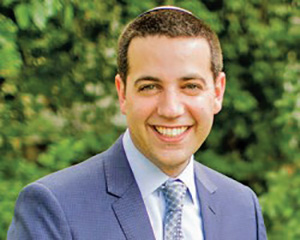
As the Jewish people embarked on their historic exodus from Egypt, they were immediately accompanied by a divine presence, a pillar of clouds by day and a pillar of fire by night, that would escort them through the desert. The Talmud (Shabbat 23b) describes that the pillar of fire, far beyond the casual chaperone, would appear before nightfall so as to safely arrive before the clouds dissipated and, similarly, the clouds would appear before sunrise so as to seamlessly take over the day shift from the fire; there was not a moment that the Jewish people were left unsupervised. While not explicit in the text, it would seem that the people dutifully followed the clouds, and the clouds proudly guided the people for every moment of the years that followed.
In Bamidbar 12, following the accusatory conversation that Miriam and Aharon had about Moshe, Miriam was sent to remain outside the encampment for seven days and, during that time, the Jewish people stayed where they had camped. While most commentators assume that the pillar of clouds, out of respect for Miriam, remained at that location for those seven days, the Seforno disagrees. He suggests that the clouds actually journeyed forward in the desert and, for the first time since the Exodus, the people, in a courageously defiant way, decided to let the clouds leave; they parted ways with their chaperone so that they could remain with Miriam, even as that would require them to chart their own path through the desert. While the nuanced detail of this narrative could easily be overlooked, I believe that it represents a significant advancement in their maturing as a nation and in their relationship with God.
Dr. Ron Taffel, in his book “Childhood Unbound,” describes six steps toward offering adolescents helpful guidance. His fifth step, The Power of Impotence, suggests that a parent/teacher acknowledge their inability to control the behaviors of another. Specifically, he argues that “this Zen moment in childrearing, the paradox of being as clear as you can about what you expect and then admitting your limitations, is perhaps the single most important moment in getting both your love and advice across to children.” Therefore, in place of admonishing a child with a phrase like “You are absolutely forbidden from hanging out with those friends anymore,” Taffel would advocate for a message like “I don’t want you to hang out with those friends anymore—here’s why—but you also know that I won’t be around to supervise you. It is going to be your decision, but there will be consequences for the decision you make.”
Similarly, in the book “How to Talk So Kids Will Listen & Listen So Kids Will Talk,” authors Adele Faber and Elaine Mazlish emphasize the importance of encouraging autonomy within our children. They suggest the following six suggestions to promote child/student autonomy: “Let children make choices; show respect for a child’s struggle; don’t ask too many questions; don’t rush to answer questions; encourage children to use sources outside the home; don’t take away hope.” Creating space where our children can explore (and fail), allowing for time that our children can own (and misuse) and honoring the ideas that our children wonder about (realistic or not), can require a tremendous amount of parental patience, but they can contribute to a child’s hopes maturing into their passions and their passions into the drive that fuels their adult lives.
As parents and educators, the importance of our children’s safety and education often makes us wish that we could guide them successfully through every challenge and journey. However, it is only when our children are able to let their “clouds” move on and to assert their own decision making and exploration that enduring and meaningful growth takes place.
By Rabbi Tavi Koslowe
Rabbi Tavi Koslowe is the Judaic studies principal at the Idea School.










